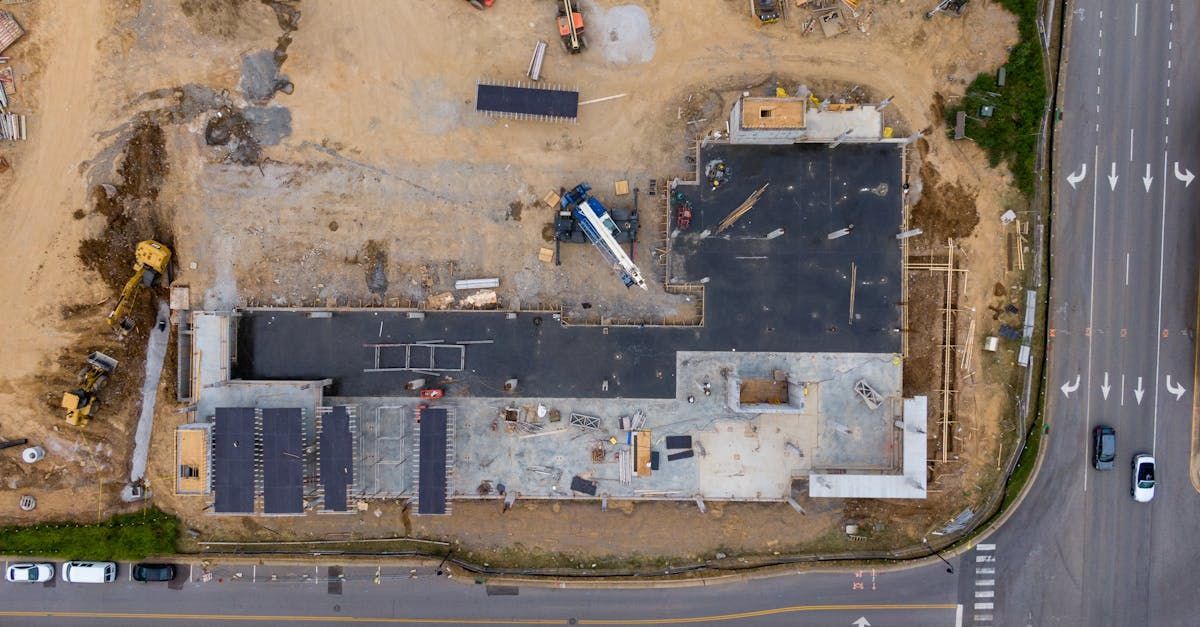
Retail space development offers tremendous opportunities for businesses looking to establish a physical presence. From location selection to design and construction, understanding how to develop retail space is crucial for long-term success.
Key Takeaways:
- Retail space development involves various steps including site selection, design, construction, and compliance with local regulations.
- Choosing the right location can significantly impact foot traffic and sales.
- Effective design and layout are essential for creating an inviting atmosphere.
- Collaboration with experienced contractors and architects is key to a successful project.
- Budgeting and project management are fundamental to staying on track financially and meeting deadlines.
What is Retail Space Development?
Retail space development is the process of creating commercial properties designed for retail businesses. This encompasses various stages, from site selection and acquisition to construction and final touches. The objective is to build a space that meets the needs of retailers while adhering to local regulations and maximizing business potential.
The Importance of Location
Finding the Ideal Spot
The first step in retail space development is finding the right location. A prime location can drive foot traffic and boost sales, making it one of the most critical aspects of the development process.
Factors to Consider:
- Proximity to Customers: Ensure the location is easily accessible to your target audience.
- Visibility: High visibility locations attract more walk-ins.
- Competition: Analyze the presence of competitors within the vicinity.
- Accessibility: Convenient parking and public transport options enhance customer experience.
- Local Demographics: Understand the spending habits and preferences of the local population.
Designing the Perfect Retail Space
Design plays a vital role in the success of a retail space. A well-designed store can enhance the shopping experience and encourage customers to spend more time and money.
Key Design Elements:
- Layout: An efficient layout ensures smooth customer flow and maximizes display areas.
- Lighting: Proper lighting can highlight products and create a welcoming atmosphere.
- Signage: Clear and attractive signage helps in navigating the store.
- Aesthetics: The overall look and feel should align with the brand's identity.
- Accessibility: Ensure the space is accessible to all customers, including those with disabilities.
Working with Professionals
Collaborating with experienced architects and interior designers can bring your vision to life. These professionals can provide valuable insights and create a design that meets both functional and aesthetic requirements.
The Construction Phase
Building with Precision
Once the design is finalized, the construction phase begins. This involves various tasks such as site preparation, foundation laying, and building the structure.
Key Steps in Construction:
- Pre-Construction Planning: Detailed planning and scheduling to ensure timely completion.
- Site Preparation: Clearing the site and laying the foundation.
- Building the Structure: Erecting the walls, roofing, and other structural components.
- Interior Work: Installing electrical, plumbing, and HVAC systems.
- Finishing Touches: Painting, flooring, and installing fixtures and fittings.
Regulatory Compliance
Adhering to local building codes and regulations is crucial during the construction phase. Ensure all necessary permits are obtained, and inspections are scheduled to avoid any legal issues.
Budgeting and Financial Planning
Managing Costs
Effective budgeting is essential for the success of any retail space development project. This involves estimating costs accurately and managing expenses throughout the project.
Budgeting Tips:
- Estimate Costs: Develop a detailed budget that includes all potential expenses.
- Contingency Fund: Set aside a contingency fund for unexpected costs.
- Track Expenses: Regularly monitor expenses to stay within budget.
- Hire Experienced Contractors: Working with reputable contractors can help avoid costly mistakes.
Funding Options
Securing the necessary funding is a critical aspect of retail space development. Explore various financing options such as bank loans, investor funding, or government grants.
Project Management
Staying on Track
Effective project management ensures that the development stays on track and meets its deadlines. This involves coordinating various tasks, managing resources, and addressing any issues that arise.
Key Project Management Aspects:
- Scheduling: Develop a comprehensive project schedule with clear milestones.
- Resource Management: Ensure all necessary resources are available when needed.
- Communication: Maintain open lines of communication with all stakeholders.
- Problem-Solving: Address any issues promptly to avoid delays.
Post-Construction Considerations
Final Inspections and Approvals
After construction is complete, the space must undergo final inspections to ensure it meets all safety and quality standards. Obtain any necessary approvals before opening the store.
Marketing and Promotion
Effective marketing can drive initial foot traffic and create buzz around the new retail space. Utilize various channels such as social media, local advertising, and events to promote the store.
Ongoing Maintenance
Regular maintenance is essential to keep the retail space in top condition. Develop a maintenance schedule and address any issues promptly to ensure a positive customer experience.
Real-Life Experience: A Case Study
Kendrick Construction recently completed a retail space development project in Bluffton, SC. The project involved transforming an old warehouse into a modern retail space for a local boutique.
Project Highlights:
- Location: The warehouse was located in a high-traffic area, ensuring maximum visibility.
- Design: The design team created an open and inviting layout with plenty of natural light.
- Construction: The construction phase was completed on time and within budget, thanks to effective project management.
- Results: The boutique saw a 30% increase in foot traffic within the first month of opening.
Benefits of Retail Space Development
Boosting Local Economy
Developing retail spaces can stimulate the local economy by creating jobs and attracting more businesses to the area.
Enhancing Community Experience
Well-designed retail spaces can enhance the community experience by providing convenient shopping options and social interaction spaces.
Increasing Property Value
Investing in retail space development can increase property values in the surrounding area, benefiting local property owners.
Challenges and Solutions
Common Challenges:
- Budget Overruns: Keep track of expenses and have a contingency plan.
- Regulatory Hurdles: Ensure all permits and approvals are obtained in advance.
- Design Flaws: Work closely with architects and designers to avoid design issues.
Solutions:
- Regular Monitoring: Regularly monitor the project to stay on track.
- Experienced Team: Hire experienced professionals to manage the project.
- Effective Communication: Maintain open communication with all stakeholders to address issues promptly.
Key Features of Successful Retail Spaces
Customer-Centric Design
Successful retail spaces prioritize the customer experience with thoughtful design and layout.
Flexibility
Flexible spaces that can adapt to changing business needs are more likely to succeed in the long term.
Technology Integration
Integrating technology such as digital signage and self-checkout systems can enhance the shopping experience.
Sustainable Practices
Implementing sustainable practices such as energy-efficient lighting and waste reduction can appeal to environmentally-conscious consumers.
Conclusion
Retail space development is a multifaceted process that requires careful planning, design, and execution. By focusing on the key aspects of location, design, construction, budgeting, and project management, businesses can create successful retail spaces that drive foot traffic and sales. Collaborating with experienced professionals and staying on top of regulatory requirements can ensure a smooth and successful development process.
Steps for Successful Retail Space Development
- Conduct thorough market research.
- Choose a prime location.
- Develop a detailed budget and secure funding.
- Collaborate with experienced architects and designers.
- Obtain all necessary permits and approvals.
- Monitor the construction process closely.
- Implement effective marketing strategies.
- Plan for ongoing maintenance and improvements.
By following these steps, businesses can navigate the complexities of retail space development and create spaces that attract and retain customers.

